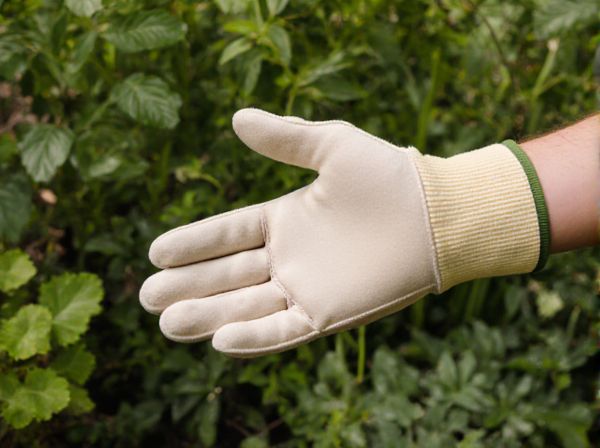
Flush cut vs collar cut Illustration
Flush cuts remove a branch by cutting directly against the trunk, often damaging the branch collar and hindering proper healing. Collar cuts preserve the branch collar by cutting just outside it, promoting quicker closure and reducing the risk of disease. Choosing collar cuts enhances tree health by maintaining natural defense mechanisms and structural integrity.
Table of Comparison
| Aspect | Flush Cut | Collar Cut |
|---|---|---|
| Definition | Cutting branch flush against the trunk with no branch collar left | Cutting just outside the branch collar, preserving the protective tissue |
| Tree Health Impact | Higher risk of decay and disease due to exposed wood | Promotes faster and healthier healing, reducing decay risk |
| Healing Time | Slower wound closure | Faster wound compartmentalization |
| Structural Integrity | Weakens tree structure over time | Maintains tree strength and stability |
| Best Use | Not recommended for permanent pruning | Recommended for routine and corrective pruning |
Understanding Flush Cut and Collar Cut in Pruning
Flush cut pruning removes a branch directly at the trunk or main stem, often damaging the branch bark ridge and collar, which can hinder the tree's natural healing process and increase vulnerability to disease. Collar cut pruning preserves the branch collar--a swollen area of specialized cells at the base of a branch--allowing the tree to seal wounds more effectively and promote healthy regrowth. Proper understanding of flush cut versus collar cut is essential for maintaining tree health and structural integrity during pruning.
The Science Behind Pruning Techniques
Flush cuts remove the branch flush with the trunk, often damaging the branch collar, which contains specialized cells that promote wound healing and prevent decay. Collar cuts preserve the branch collar by cutting just outside this swollen area, enabling the tree to effectively compartmentalize the injury and accelerate callus formation. Scientific studies show that preserving the branch collar significantly reduces the risk of disease and decay compared to flush cuts, enhancing tree health and longevity.
What Is a Flush Cut?
A flush cut is a pruning technique where branches are cut directly at the branch collar or as close to the trunk as possible without leaving a stub. This method promotes faster healing by allowing the tree to seal the wound effectively, reducing the risk of disease and decay. Unlike a collar cut, which preserves the branch collar tissue, a flush cut removes it entirely, potentially slowing the tree's natural recovery process.
What Is a Collar Cut?
A collar cut removes a branch just outside the swollen area where the branch meets the trunk, preserving the tree's protective collar tissue essential for proper healing. Unlike a flush cut, which cuts flush with the trunk and damages this collar, a collar cut maintains the tree's natural defense against disease and decay. Proper collar cutting supports faster wound closure and healthier regrowth in pruning practices.
Key Differences: Flush Cut vs Collar Cut
Flush cuts remove a branch flush with the trunk, eliminating the branch collar and increasing the risk of infection and decay. Collar cuts preserve the branch collar, a swollen area where the branch joins the trunk, promoting faster healing and reducing damage to the tree. Proper pruning technique favors collar cuts for maintaining tree health and structural integrity.
Impact on Tree Health: Which Cut Is Better?
Flush cuts remove the branch collar, disrupting the tree's natural defense system and increasing vulnerability to decay and disease, which negatively impacts overall tree health. Collar cuts preserve the branch collar, allowing the tree to heal more efficiently by sealing the wound with callus tissue, thereby reducing the risk of infection and promoting long-term vitality. Arborists recommend collar cuts as the superior pruning method for maintaining tree health and structural integrity.
Common Mistakes in Pruning Cuts
Common mistakes in pruning cuts include using flush cuts that damage the branch collar, hindering proper healing and increasing vulnerability to disease and decay. Collar cuts preserve the branch collar, promoting faster wound closure and maintaining the tree's natural defense mechanisms. Incorrectly removing the branch collar can lead to weak branch attachments and long-term structural issues.
Step-by-Step Guide to Making a Collar Cut
Begin the collar cut by locating the branch collar, the swollen area where the branch meets the trunk, to ensure a precise and healthy cut. Position your pruning saw slightly away from the trunk, angling the blade to avoid damaging the collar tissue, and make a clean cut in one smooth motion. This technique promotes faster healing and reduces the risk of disease compared to flush cuts, which often remove the protective collar tissue.
Best Practices for Clean and Safe Pruning
Flush cuts remove branches directly at the trunk, often damaging the branch collar and increasing the risk of decay and disease. Collar cuts preserve the branch collar, promoting faster healing and maintaining tree health by enabling the natural defense mechanisms to activate. Best practices recommend collar cuts for clean, safe pruning to enhance tree longevity and structural integrity.
Expert Tips for Choosing the Right Pruning Method
Expert tips for choosing between flush cuts and collar cuts emphasize preserving tree health by avoiding flush cuts, which remove the branch collar and increase susceptibility to decay and disease. Collar cuts, made just outside the branch collar, promote faster healing and reduce the risk of infection by enabling the tree's natural defense mechanisms to seal the wound effectively. Proper pruning techniques prioritize cutting angles and positions that maintain the structural integrity and longevity of the tree.
Flush cut vs collar cut Infographic

 gardendif.com
gardendif.com